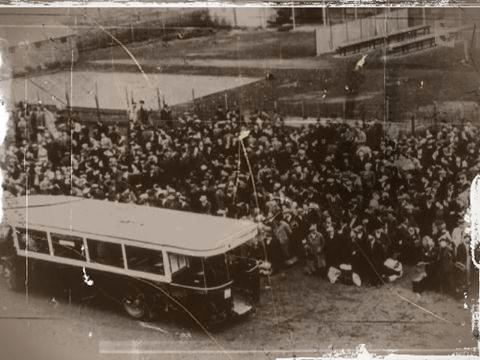Author: Tatiana De Rosnay Title: Sarah's Key
What made you interested in this author?
Before reading Sarah's Key I must admit that I had never heard of Tatiana De Rosnay. I had heard of the novel Sarah's Key but not the author Ms. De Rosnay. Once i picked up the book though and was trying to decide whether to read it or not, I read a few pages to help me decide. And what helped me make the decision to read the book was her writing style. I found it interesting how she chooses to write the book with two different perspectives, and very short chapters. I also did some quick research to see how people liked the book, and most commented on how they liked how she had written it, so this made me interested in the book and her.
Background on the Author.
Tatiana De Rosnay was born on
September 28 1961 in Neuilly Sur Seine, which is just outside of
Paris France. She is of English, French and Russian descent, but she grew up and lived in both the
United States (
Boston) and
Paris and later
England where she went to the
University of East Anglia and studied literature. Later she became a journalist before an author; she worked for the magazines Vanity Fair and Elle. Tatiana De Rosnay has currently written many books, the first in 1992, and the latest released earlier this year. Many of her books have been translated in many different languages including her native French and English. Ms. De Rosnay is currently married and has two kids, and they in
Paris.
Other Published Works and genres.
She has currently written 11 books, and they are (in order of publishing):
The Show apartment
Married Fathers
Les Diner des ex: Roman
The heart of another
The neighbor
Spirals
Moka
Her name was Sarah (also known as Sarah's Key)
Memory Wall
Boomerang
A Secrete Kept
The genre that Tatiana De Rosnay writes is fiction, but each book branches out into subcategories of the fiction genre. She has dramatic fiction, a little mystery fiction and Sarah's Key in considered Historic fiction.
Particular influences or interests of your author.
Tatiana De Rosnay seems to like placing the setting of her books in
Europe especially
France. I would think this is because she is French herself and this is where she lives so a familiar setting would be easier to write about. She also seems to have quite a few strong child characters, or characters that look back on their childhood, so she may be influenced from her childhood, or even her own children.
Themes favored by the author:
Themes that seem to be favored by Tatiana De Rosnay are: strength, family relationships, childhood, and the past. These are themes that are present in Sarah's Key and also in number of her other books. She seems to have a character in each of her books that must show their strength to overcome an obstacle at some point. Family relationships are a theme very present in Sarah's Key and from what i have read of A Secrete Kept as well. The family members in the book are what keep the main characters strong, and their way of living and thought seems to be based on how they lived with their family and how their relationships with them. Her child characters like "the girl" in Sarah's Key and the references to characters childhoods shows the theme of childhood and how our childhood is very important and can even define who we are. The theme of the past is very relevant in Sarah's Key because she is looking back at history and the past can affect the future. These are just some themes that I have come across while reading Sarah's Key and researching Tatiana De Rosnay and her works.
Other authors compared to...
She likes to compare some of her works to books and authors such as: The pursuit of Happiness by Douglas Kennedy;
Shophie's Choice by William Styron; Suite
Francaise by Irene
Nemirovsky and others. Personally compared to other authors she is one of my favorites. Her writing style I enjoy and it is not something that is hard to read and understand. She writes about interesting and ratable themes and I enjoy her as an author.
Critical Articles
Because the book Sarah's Key is still quite new it is very hard to find good criticism about the novel so here are three critical articles about the genre Historical Fiction.
Go to
http://www.proquestk12.com/, next log in and click the elibrary Curriculum Edition Canada. Next go to the literature link. Once there in the search box type in Historical Fiction and scroll down to the criticisms section.
Ames, John Edwards.
Historical Fiction: Get more than just the facts right.
Boston:
Kalmbach Publishing Company, 2004.
http://literature.proquestlearning.com/quick/displayItem.do?QueryName=criticism&ResultsID=12B21826319&forAuthor=0&ItemNumber=55
Go to more on the criticisms section then go to the third page, click on article 55.
Beverley, Jo.
Historical Fiction.
Boston:
Kalmbach Publishing Company, 2005.
Scott
MacLeod, Anne.
Writing Backward: Modern Models in Historical Fiction.
Boston: Horn Book Incorporated, 1998.
Go to the fourth page of criticisms and click on article 79.


